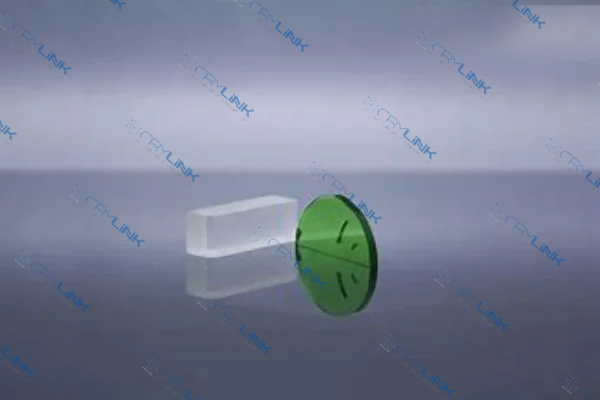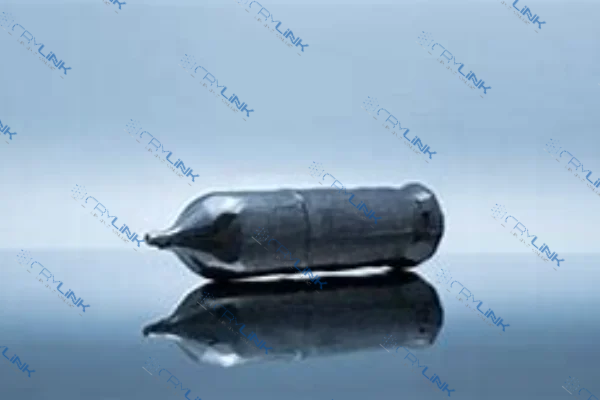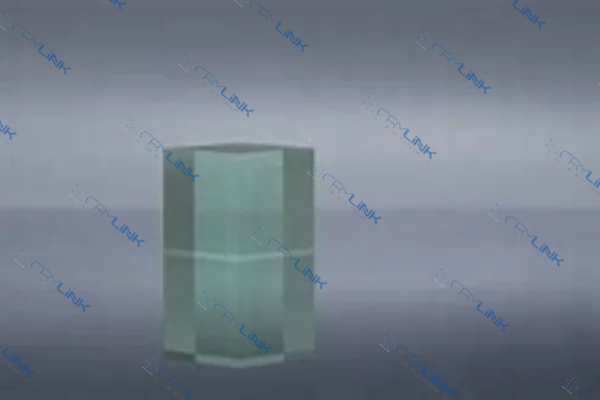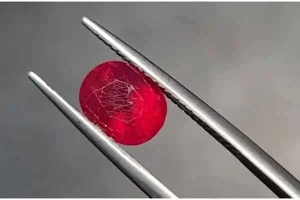Cr-doped laser crystals have significantly transformed the laser technology landscape, offering a variety of application-specific advantages. Among these, Cr:GSGG, Cr:YAG, and Cr:LiSAF have emerged as leading choices for various applications. This article delves deep into these crystals, comparing their characteristics to help users make informed decisions based on emission wavelengths, absorption bands, and energy levels.

Overview of Chromium-Doped Laser Crystals
In the realm of photonics and optics, the quest for efficient, durable, and versatile lasing materials has given rise to various innovations. Among these, chromium-doped laser crystals have emerged as an influential class of materials, driving advancements in numerous applications spanning from medical treatments to communication technologies.
Chromium-doped (Cr-doped) laser crystals are specialized crystals that have been infused with chromium ions. But why chromium? The answer lies in the unique properties of chromium ions. They have an exceptional ability to absorb external energy, usually in the form of light, and then re-emit it. This process of absorbing and re-emitting light is central to the very essence of how lasers work.
At a foundational level, a laser works by stimulating the emission of light from a medium. In Cr-doped crystals, the chromium ions serve as this medium, specifically referred to as the “active laser medium.” When these ions are excited by an external energy source, like a flash lamp or another laser, they reach a higher energy state.
However, being in this excited state is unstable for the ions, and they seek to return to their normal state. As they revert back to their original state, they release the extra energy they had absorbed, but this time, as a concentrated beam of light. This emitted light is what we harness in laser devices.
The beauty of Cr-doped laser crystals lies in their efficiency. The presence of chromium ions ensures a higher probability of producing a laser beam, as opposed to other mediums. This is because chromium ions have specific electron configurations that favor the process of light emission.
Moreover, the crystal structure in which these chromium ions are housed also plays a pivotal role. By embedding the ions in different crystal matrices, scientists can tweak the properties of the resulting laser beam, such as its color (wavelength) or its intensity. This versatility offered by Cr-doped laser crystals has made them an integral part of modern laser technology, ensuring their continued relevance and application in diverse fields.
Characteristics of Cr:GSGG Crystals
Cr:GSGG, scientifically known as Chromium-doped Gadolinium Scandium Gallium Garnet, stands out in the family of laser crystals for its unique set of properties. These properties, influenced by its crystalline structure and chromium doping, make it a preferred choice for various high-end applications.
Delving deeper into its emission wavelengths, Cr:GSGG emits light predominantly between 770 nm and 795 nm. This specific range is what defines its potential applications. For instance, medical imaging techniques require precision, clarity, and depth.
The emission wavelength of Cr:GSGG offers the perfect balance to achieve detailed imaging results, capturing nuances that can be pivotal in medical diagnostics. In the realm of optical communications, the ability to transmit data over light waves is crucial.
The emission spectrum of Cr:GSGG aligns well with the optimal wavelengths used in fiber-optic communications, ensuring minimal loss and high-speed data transmission. Additionally, certain military applications benefit from this wavelength range, especially in secure communication systems and infrared detection technologies.
The absorption bands of a laser crystal dictate how it can be efficiently “pumped” or energized. For Cr:GSGG, the primary absorption occurs around 400 nm and 640 nm. This specific absorption spectrum allows the crystal to be efficiently pumped using traditional flash lamps or the more modern and efficient diode lasers. The alignment of the absorption bands with common pumping sources ensures that the maximum energy is absorbed, reducing wastage and ensuring efficient lasing action.
One of the standout features of Cr:GSGG is its impressive energy storage capacity. In the world of lasers, the ability to store energy and then release it in a controlled manner is pivotal for certain applications.
Pulsed laser operations, where bursts of energy are needed rather than a continuous beam, benefit immensely from crystals with high energy storage. Q-switched lasers, for example, require rapid and high-intensity pulses of light. The inherent energy storage capability of Cr:GSGG makes it one of the top choices for such demanding applications, where precision and power go hand in hand.

Deep Dive into Cr:YAG Crystals
Cr:YAG, or Chromium-doped Yttrium Aluminum Garnet, offers a unique set of characteristics, particularly in the realm of infrared laser applications. Its attributes extend across its emission wavelengths, absorption bands, and energy levels, each contributing to its prominence in various technological domains.
The emission wavelengths of Cr:YAG are particularly notable, falling between 940 nm to 1,100 nm. This range positions it well within the infrared spectrum, opening doors for specialized applications that require such wavelengths.
For instance, infrared lasers are widely used in range-finding technologies, where precise distance measurements are essential. Whether it’s for industrial automation, geological surveys, or military targeting, Cr:YAG’s emission characteristics make it a key player in this field. Furthermore, the medical industry has begun to explore the potential of these wavelengths for non-invasive treatments and diagnostics, where Cr:YAG can be a valuable asset.
Absorption bands, the wavelengths at which the crystal absorbs light most efficiently, are equally crucial in defining its applicability. Cr:YAG’s absorption peaks at 450 nm and 550 nm make it highly compatible with Nd:YAG pumping sources. This compatibility ensures efficient energy transfer, optimizing the performance of the laser system.
The synchrony between the absorption bands and popular pumping sources not only enhances the effectiveness but also contributes to cost-efficiency. By aligning with commonly used pumping technologies, Cr:YAG minimizes the need for specialized, expensive equipment, making it a more accessible choice.
One of the nuanced attributes of Cr:YAG is its energy-level structure, marked by a lower quantum defect. Quantum defects often lead to non-radiative transitions where energy is lost as heat rather than useful emission. Cr:YAG’s lower quantum defect means that a significant portion of the absorbed energy is converted into useful light, rather than being lost as heat.
This reduced heat generation is not just a theoretical curiosity; it has practical implications in continuous-wave laser operations, where thermal management is a critical concern. For applications that require a sustained laser beam rather than pulses, Cr:YAG’s thermal characteristics ensure stable, consistent performance without overheating. This stability is vital in industries such as manufacturing, where lasers are used for cutting and engraving, demanding both precision and prolonged operation.
In summary, Cr:YAG’s emission wavelengths, absorption bands, and energy levels together form a unique profile that positions it at the forefront of specific laser applications. From range finding to continuous-wave operations, its characteristics offer tailored solutions, underlying its importance in the ever-evolving field of laser technology.

Insights on Cr:LiSAF Crystals
Chromium-doped Lithium Strontium Aluminum Fluoride, commonly referred to as Cr:LiSAF, stands out for its unique lasing properties and adaptability in various technological arenas. One of its key features is its versatile emission wavelengths, spanning from 780 nm to 920 nm. This broad tuning range not only makes it suitable for telecommunications, where varying wavelengths can be used for different channels, but also positions it as an invaluable tool in medical treatments, especially in procedures requiring precision and adaptability.
Complementing its emission attributes, Cr:LiSAF’s absorption profile is marked by multiple peaks around the 450 nm zone. This specificity in absorption allows for efficient pumping using blue diode lasers, ensuring optimal energy transfer and minimizing wastage. But what truly distinguishes Cr:LiSAF is its capability for ultrafast laser operations. This is attributed to its broad emission bandwidth, enabling it to produce quick pulses of light, ideal for applications that require high-speed and high-intensity laser outputs. Whether in industrial processes, medical diagnostics, or advanced research, Cr:LiSAF’s holistic attributes make it a preferred choice for a multitude of laser-based applications

Direct Comparison: Cr:GSGG vs. Cr:YAG vs. Cr:LiSAF
When juxtaposing the three crystals, Cr:GSGG stands out for its high energy storage, Cr:YAG for its efficiency in continuous-wave operations, and Cr:LiSAF for its ultrafast laser operations. The choice among these would largely depend on the specific application in mind.

Conclusion
Cr-doped laser crystals have each carved a niche in the laser technology realm. While Cr:GSGG, Cr:YAG, and Cr:LiSAF each offer unique advantages, the decision to opt for one over the others should be primarily based on the specific application and desired laser operation mode. By understanding their distinct emission wavelengths, absorption bands, and energy levels, users can make an informed choice tailored to their needs.
FAQs
- 1. For which applications is Cr:GSGG most suitable?
- Cr:GSGG is ideal for medical imaging, optical communications, and certain military applications due to its specific emission wavelength.
- 2. How does Cr:YAG’s heat generation compare to the others?
- Cr:YAG has a reduced heat generation, making it more suitable for continuous-wave laser operations.
- 3. Which crystal is best for ultrafast laser operations?
- Cr:LiSAF is renowned for its ultrafast laser operation capability.
- 4. What are the primary absorption bands for Cr:LiSAF?
- Cr:LiSAF predominantly absorbs around 450 nm, aligning well with blue diode laser pumping.
- 5. How does Cr:GSGG’s energy storage compare with Cr:YAG and Cr:LiSAF?
- Cr:GSGG possesses a high energy storage capacity, making it a top choice for pulsed laser operations.







